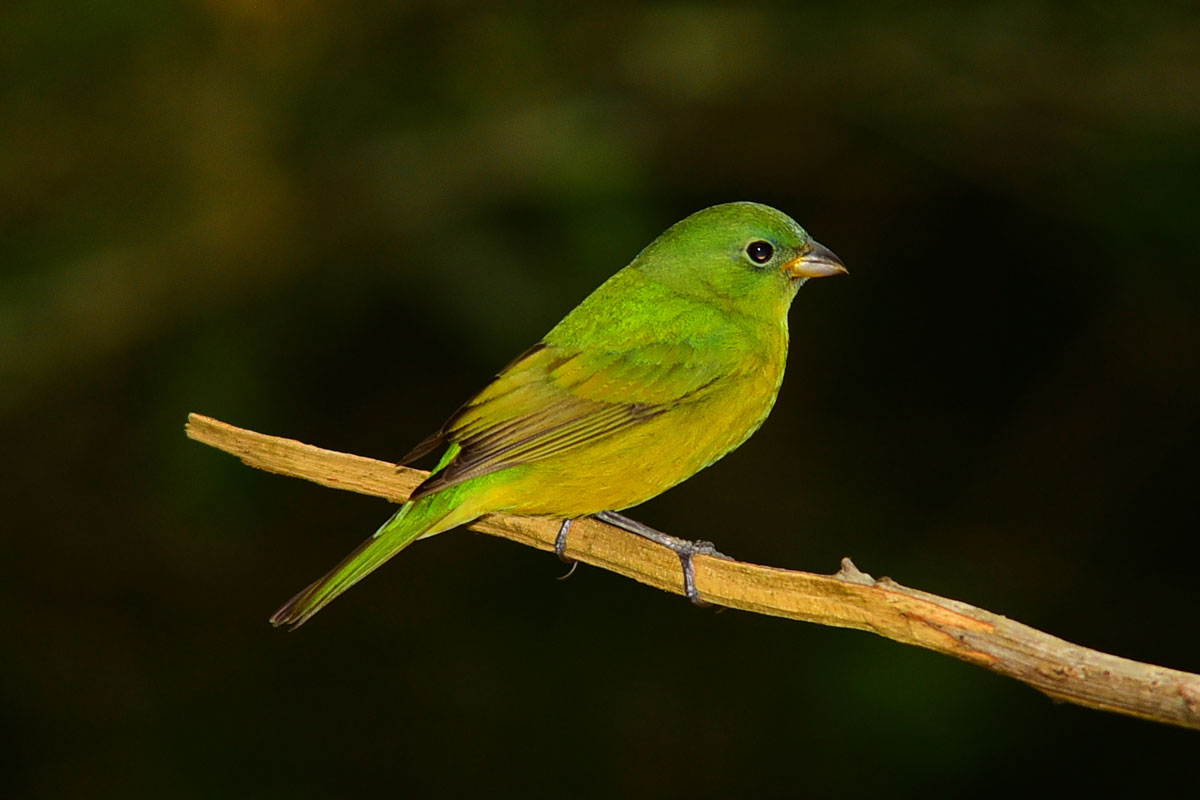Painted Buntings are a sight to see, looking as though they popped out of a coloring book. Males are covered in splashes of red, green, blue and yellow, while females and juvenile Painted Buntings are bright green. To catch a glimpse of this striking bird, visit its home in the coastal southeast or south-central U.S. Want to learn more about these beautiful, feathered friends? Check out these 10 fascinating facts about the Painted Bunting!
Painted Buntings are a sight to see, looking as though they popped out of a coloring book. Males are covered in splashes of red, green, blue and yellow, while females and juvenile Painted Buntings are bright green. To catch a glimpse of this striking bird, visit its home in the coastal southeast or south-central U.S. Want to learn more about these beautiful, feathered friends? Check out these 10 fascinating facts about the Painted Bunting!

Females and juvenile Painted Buntings are a bright yellow-green. Cturtletrax / iStock / Getty Images Plus
- Male Painted Buntings are a vibrant blue, green, yellow, and red, while females and juvenile males are bright yellow-green with light rings around their eyes.
- The bright colors of the male Painted Bunting develop in the second year of life. Before then, they have the colorings of females.
- The Painted Bunting is a species in the cardinal family.
- Oftentimes, female Painted Buntings will lay two clutches of eggs each breeding season, using the same nest after the first hatchlings have fledged to incubate a second clutch of eggs.
- Painted Buntings are separated into two subspecies based on their distinctive breeding grounds. The eastern population breeds along the southeast coast of the United States, and winters in southern Florida and the Caribbean islands; while the Western population can be found in the south central United States and migrates to Mexico and Central America.
- The French name for the Painted Bunting is nonpareil which translates to “without equal” — an accurate description of this bird’s dazzling colors.
- Painted Buntings occasionally show up farther north than their typical breeding grounds, with one being reported in Central Park in New York in 2015, and are sometimes seen as far north as New Brunswick, Canada.
- Although they are brightly colored, Painted Buntings can be hard to spot outside of breeding season since they prefer to stay low, under cover of dense vegetation.
- Western Painted Buntings begin to migrate before molting mid-migration in Mexico, a behavior that is extremely rare in songbirds, while Eastern Painted Buntings molt before migrating.
- Painted Buntings will visit bird feeders after the breeding season is over in midsummer. They prefer small seeds like those found in Lyric Finch Mix.
